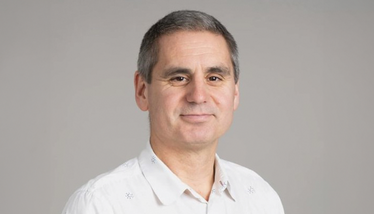The Virus and the Vaccine
The search for an effective treatment for childhood brain cancers goes on, but a modified Herpes virus could represent a breakthrough.
| 5 min read | Interview

When it comes to finding a treatment for an aggressive and devastating disease such as childhood brain cancer, pharmaceutical scientists will not rule out a single potential option until it has been tested – including experimenting with the cold sore virus. The herpes simplex virus type 1 (HSV-1) infects the nerve cells to cause painful blisters or lesions. However, after undergoing an engineering process and being combined with a cancer vaccine called SNAPvax (designed by Robert Seder at the NIAID Vaccine Research Center and collaborators from Vaccitech North America), HSV-1 was able to enter cancer cells, break them open, and expose them to the human immune system. (1)
A transatlantic team of scientists has been involved in the project, including researchers from the University of Texas MD Anderson Cancer Center, the University of Alabama at Birmingham, Harvard University, Dana-Farber Cancer Institute, Mount Sinai, and the University of Cambridge, UK. The work is now heading into a phase I trial. Early results have shown that 11 out of 12 children treated have responded.
Based on information from between 1995 and 2010 and the Central Brain Tumor Registry of the US, five-year survival rates for children with glioblastoma is just 20 percent, and survivors beyond that period remain subject to vigorous radiotherapy and chemotherapy treatments designed for adults. The specific type of brain tumor investigated in the research, diffuse intrinsic pontine glioma (DIPG), occurs in a part of the brain that controls critical functions, including breathing. The tumor cannot be removed surgically. “There are no treatments that have shown to improve survival, and radiotherapy treatment is palliative. Even with this, children who develop DIPGs survive, on average, for only nine months after diagnosis,” says David Jenkinson, Head of Childhood Cancer at LifeArc.
LifeArc is a UK-based self-funded medical research charity focused on bringing medical breakthroughs to the clinic through funding, collaboration, and knowledge sharing. It targets underserved areas of research in diseases ranging from childhood cancer to motor neuron disease. Here Jenkinson shares his thoughts on what industry and academia can do to improve the funding, the research, and the outcomes for children diagnosed with DIPG brain tumors.
Why do you think there have been so few breakthroughs in this field?
Thankfully, these tumors are rare, but this also means that there are too few samples for analysis, especially at any single institution. This has driven collaboration through necessity, but we are only just starting to understand the biology of these diseases, which is a critical foundation for any future research.
In adult cancers, this work is often undertaken by or in collaboration with pharmaceutical companies. Because of the small patient population for DIPG, there are few financial incentives for commercial companies to invest in this space, meaning that researchers are typically left with the option of trying to repurpose adult oncology drugs into childhood cancers. Sometimes this can work, but often the drivers of childhood cancers are different; they are generally cancers of a failure of differentiation rather than mutationally driven diseases, as with adult cancers. Brian tumors also have the additional complexity of the blood-brain barrier. Many adult oncology drugs are designed to not cross into the brain, to reduce the potential for toxicity, but clearly this isn’t helpful when treating brain tumors.
At LifeArc we are looking at ways that we can bring forward bespoke therapeutics, designed specifically against the drivers of childhood cancers and overcome these scientific and business challenges.
How does a cold sore virus fit into innovative cancer treatment?
The cold sore, or herpes virus, can be modified to make it into a potent oncolytic virus. These modifications mean that it is no longer able to infect normal cells, but preferentially infects tumor cells. The virus is only able to replicate in tumor cells and has a natural selection for neuronal cells, making brain tumors ideal targets. When the virus replicates, it causes the cancer cell to explode, releasing more virus (as well as antigens) that the immune system can recognize and potentially start to attack. The recent work combines the virus with a vaccine to prime the immune system, so when the virus causes tumor cell lysis, the immune system can rapidly recognize the released antigens and improve the response to the virus alone.

How long have researchers believed that genetic modification of a herpes virus could be a breakthrough?
Oncolytic viruses have been approved for treatment of cancer for a number of years. The first approval of this approach by the US FDA was in 2015. However, this hasn’t resulted in any other viruses being approved yet. Engaging the patient's own immune system is widely seen as important to achieve cures and a number of different approaches are being investigated. The progress of this viral/vaccine combination approach is exciting because there are no treatments for DIPG and the outlook is dismal for these children.
The Medicine Maker Presents:
Enjoying yourself? There's plenty more where that came from! Our weekly Newsletter brings you the most popular stories as they unfold, chosen by our fantastic Editorial team!
What human stories emphasize the need for new treatments in this area?
When Londoners Namrata and Bhavesh Pandya’s 14-year-old son Khushil developed a DIPG brain tumor in September 2017, they focused their efforts on giving him a life as normal as possible and committed to spending his remaining time fulfilling a list of things he wished to achieve. Khushil continued to go to school, and he completed his bronze Duke of Edinburgh expedition in June 2017 in a wheelchair before dying at home in his parents’ arms.
Stories like Kushil’s remind us every day of why we do what we do. It is easy to just see our work as a science, structural, or business problem to solve, but hearing the personal accounts of (Khushil’s parents) Namrata and Bhavesh reminds us of the impact this work can have and makes us redouble our efforts to ensure that children have more hope for a better future. To support this, they have been raising funds with the Brain Tumour Charity to help drive research into DIPG tumours forward.
What are your goals for the next five or ten years?
At LifeArc, we are experts in taking promising scientific breakthroughs and turning them into new diagnostic tests, treatments, and medical devices to deliver impact for patients. We want to catalyze change in the translation of discoveries in childhood cancer into treatments for children. We want to establish sustainable structures and pathways so that treatments continue to be developed for children with cancer.
- GK Friedman et al, “Oncolytic HSV-1 G207 Immunovirotherapy for Pediatric High-Grade Gliomas”, NEJM 384, 17. (2021). DOI: 10.1056/NEJMoa2024947



















